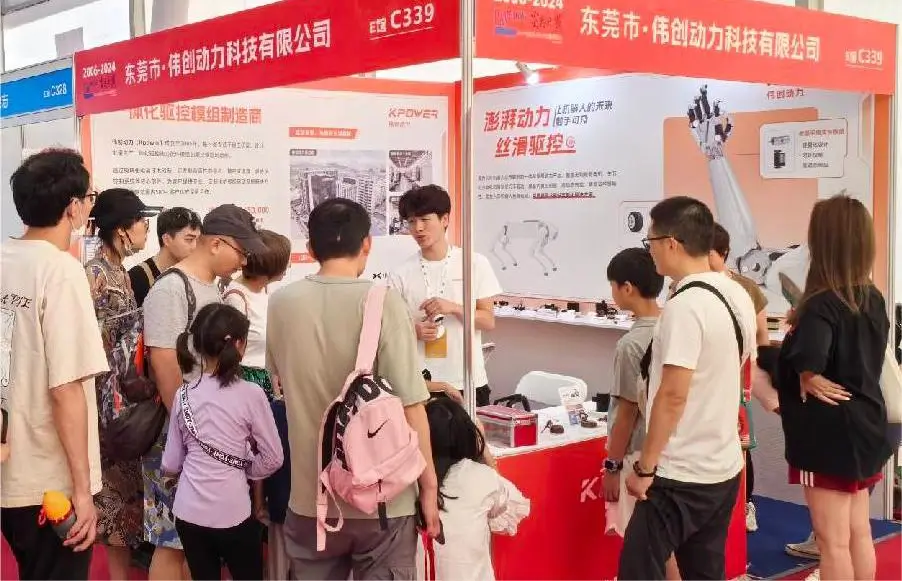part 1:
Unveiling the Future: The Magic of Robotic Arms with Servo Motors
In a world increasingly driven by automation and innovative technology, robotic arms with servo motors stand out as some of the most remarkable and versatile inventions. From manufacturing floors to surgical theaters, these sophisticated devices are revolutionizing how tasks are performed—bringing precision, efficiency, and adaptability to the forefront.

At their core, robotic arms are mechanical structures designed to mimic the functionalities of a human arm, capable of complex movements and precise manipulation of objects. What truly powers their capabilities is the integration of servo motors—small, yet highly capable electric motors that enable fine control over movement, position, and speed.
Understanding the Basics: What Is a Servo Motor? A servo motor is a rotary or linear actuator that allows precise control of angular or linear position, velocity, and acceleration. Unlike traditional motors that simply run continuously, servo motors work with feedback systems, often called "closed-loop control," allowing them to make real-time adjustments and maintain accurate positioning.
In the context of robotic arms, servo motors are often linked with sensors and control algorithms to produce smooth, coordinated motions. The feedback mechanism constantly informs the motor about its current position, enabling seamless adjustments to reach the target orientation or position.
Design & Build: The Anatomy of a Robotic Arm A typical robotic arm comprises several segments known as "joints," which may be rotary (allowing angular movement) or linear (allowing straight-line motion). These joints are connected through links or "bones," mimicking a human arm’s structure. Each joint is usually powered by a dedicated servo motor, granting the robotic arm dexterity and flexibility.
The "shoulder," "elbow," and "wrist" joints allow the arm to reach, rotate, and manipulate objects with a high degree of freedom. Advanced models may incorporate additional joints, such as a base rotation or multiple degrees of freedom, often controlled by specialized servo motors with higher torque outputs.
The Role of Servo Motors in Precision and Flexibility Servo motors are the backbone of a robotic arm’s agility. Their ability to deliver precise rotational or linear movements ensures that the arm can perform delicate tasks, such as assembling small components or performing surgical procedures. Because servo motors operate with closed-loop feedback, they can respond dynamically to control signals—adjusting for load, ensuring safety, and maintaining steady motion even under challenging conditions.
This level of control is crucial in applications where minute errors can lead to costly mistakes or safety issues. For example, in manufacturing, servo-driven robotic arms can position components with micron-level accuracy. In medical environments, they enable surgical robots to perform intricate procedures with steady, unerring precision.
The Advantages of Using Servo Motors in Robotic Arms
High precision: Servo motors allow robotic arms to achieve exceptional positional accuracy. Responsive control: They can react swiftly to commands, adapting to changing conditions or unexpected obstacles. Versatility: Different types of servo motors—standard, brushless, or digital—can be tailored to specific tasks and environments. Load handling: Servo motors can generate high torque, enabling robotic arms to lift or manipulate heavy objects reliably. Energy efficiency: With their ability to operate in a controlled and optimized manner, servo motors often consume less power while delivering high performance.
Innovations and Advancements Recent innovations have enhanced the capabilities of servo motors in robotic arms. The emergence of brushless servo motors, improved sensors, and advanced control algorithms have led to smoother motion, higher speeds, and increased durability. Researchers are exploring new materials and designs to create lighter, more powerful servo motors that can be integrated into portable and even wearable robotic systems.
Furthermore, the integration of AI and machine learning into the control systems allows robotic arms to "learn" from their environment, optimize their movements, and even predict potential issues before they occur. This ongoing evolution ensures that robotic arms powered by advanced servo motors will continue to grow in complexity and capability.
The Industrial Impact: Automation and Beyond Within industry, robotic arms with servo motors are pivotal in streamlining production lines, reducing labor costs, and increasing consistency. In automotive manufacturing, for instance, robotic arms monolithically perform welding, assembly, and painting. These tasks require the high accuracy and repeatability that servo motors offer, ensuring quality and safety standards are consistently met.
In logistics, servo-driven robotic arms handle sorting, packing, and palletizing, dramatically increasing throughput. Even in entertainment and art, these robots are used for precise movements, creating complex sculptures or performing choreography that was once impossible.
The real allure of integrating servo motors into robotic systems lies in their adaptability. They can be programmed to perform a wide spectrum of tasks, from the most delicate handling of fragile objects to heavy-duty lifting, all within the same robotic platform. This flexibility drives innovation across sectors, where customized solutions are increasingly in demand.
Established in 2005, Kpower has been dedicated to a professional compact motion unit manufacturer, headquartered in Dongguan, Guangdong Province, China.




































